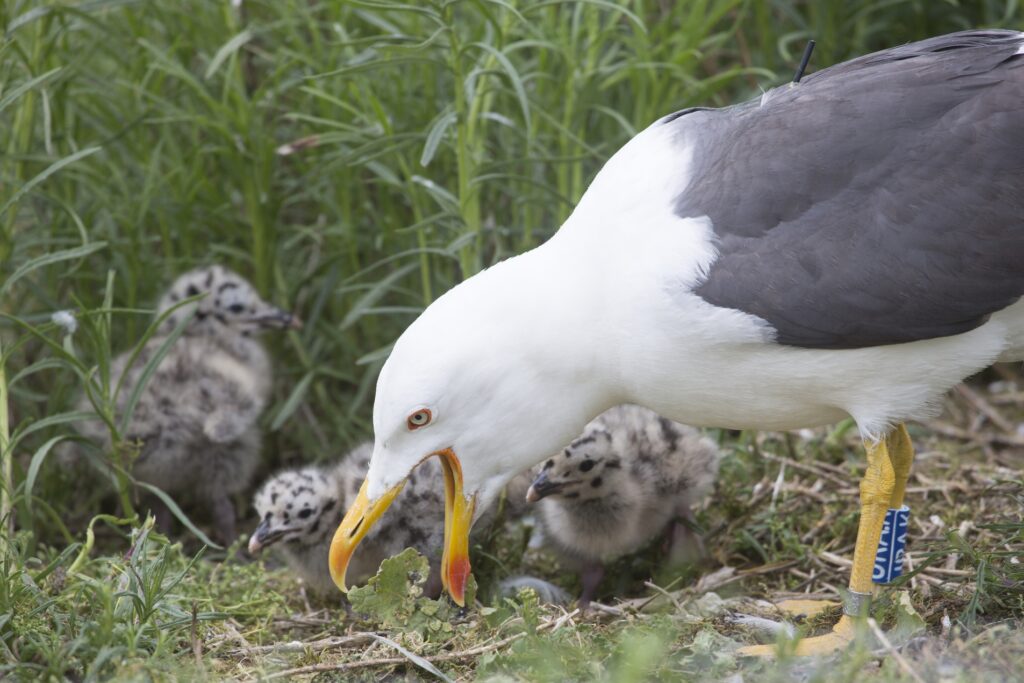Since the first breeding record of a Lesser Black-Backed Gull was collected in Belgium in 1985, the population has increased rapidly up to more than 5000 pairs in 2011. At present there are several breeding sites, mainly along the Belgian coast but also more inland. Still more than 90% of the Belgium population is breeding in the port of Zeebrugge (51°21’N, 03°11’E) in a mixed colony with about 2000 pairs of Herring Gulls.

Since 1999, the Belgian Research Institute for Nature and Forest (INBO) has studied post- nuptial migration, and mate and site fidelity using sightings of colour-ringed individuals. Although the extensive database at present holds more than 90,000 re-sighting records, the emerging migration patterns are strongly biased towards more populated areas and locations where the rings can easily be read (mainly beaches and landfills). Through the funding of LifeWatch the project now uses the UvA-BiTS technology to study migration patterns and habitat use in more detail. In 2010, we began to cooperate with the University of Gent (TEREC) to study how variation in life-history traits is related to fitness.
The main focuses of this research are:
- Unraveling the relationship between habitat use, diet, chick growth and reproductive output.
- Studying the trade-off between migratory behavior, reproductive performance and survival.
- Studying the effects of the forthcoming EU fish discard ban on habitat use, diet composition, reproduction and survival of Lesser Black-backed Gulls.
- Exploring the extent to which the Lesser Black-backed Gulls interact with offshore wind farms located along the Belgian coast.
Contact persons, funders and participants
Eric Stienen, Research Institute for Nature and Forest (INBO) eric.stienen@inbo.be
Sponsored by LifeWatch
Related publications
Adriaens, P., Vercruijsse, H.J.P. & Stienen, E. 2012. Hybrid gulls in Belgium – an update. British Birds 105: 530-542.
Bosman, D.S., Vercruijsse, H.J.P., Stienen, E.W.M., Vincx, M., De Neve, L. & Lens, L. 2012. Effects of body size on sex-related migration vary between two closely related gull species with similar size dimorphism. In: Ibis 154: 52-60.

